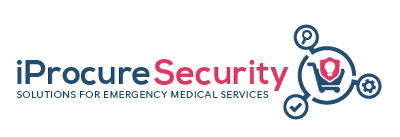
Information transmission from the ambulance with 5G
When providing first aid to patients at the scene of an emergency, emergency responders have so far been cut off from the flow of information. Up to now, assistance can often only be provided by telephone via the control centre. For time reasons, however, this is rarely used. The aim of the MOMENTUM project is therefore to develop and evaluate suitable concepts and technologies for networking emergency medical treatment along the process chain from the scene of the emergency to the hospital.
There are many issues, that cut off first responders from the information flow of the scene: Before the ambulance arrives, only little information about the arriving patient is available in the shock room. At the same time, an operating theatre is immediately reserved and held until the examination of the patient is completed, which can sometimes take several hours. However, it is not possible to prepare for a specific emergency intervention because hardly any information is available on the injuries, the patient’s current clinical condition or the measures already taken. Systems that satisfactorily support these complex processes of an emergency intervention are lacking.
In light of this, 14 project partners have come together for the research project “Mobile Medical Technology for Integrated Emergency Care and Accident Medicine” (“Momentum”) and are working on 5G communication and the networking of devices in ambulances. The aim of the project is to develop and test suitable concepts and technologies for this. To transfer the networking technologies into medical technology applications, current framework conditions are being examined from a technical, ethical, legal and social perspective. This is to be the basis for the application-related transmission of patient data, process information, video and audio data.
In order to transmit the data reliably, RTWs are to become mobile radio cells. Medical devices could then be connected to the wired core network of the mobile radio network via these. To ensure that the connection to this core network can always be maintained, an additional connection is to be established via drones. They are to relay the signal in order to increase the range of the mobile cell on the one hand, but also to overcome radio holes, for example in rural areas, on the other. In order to be able to flexibly integrate medical devices, an intermediate layer is being developed in the project, with which a manufacturer-independent interface to the mobile network is to be created. Exemplary use cases will be used to evaluate the results in order to ensure a high level of practical relevance.
The results of the “Momentum” project are to set new standards in emergency care. The network technologies developed in the project are to enable the bundled transmission of all necessary information from the scene of the emergency to the hospital. This will enable a new type of care chain between the ambulance and the shock room in the hospital, as well as the seamless monitoring of emergency patients from the beginning of first aid, supported by remote communication technology. Coordinator of the “Momentum” research network is the University of Leipzig.

